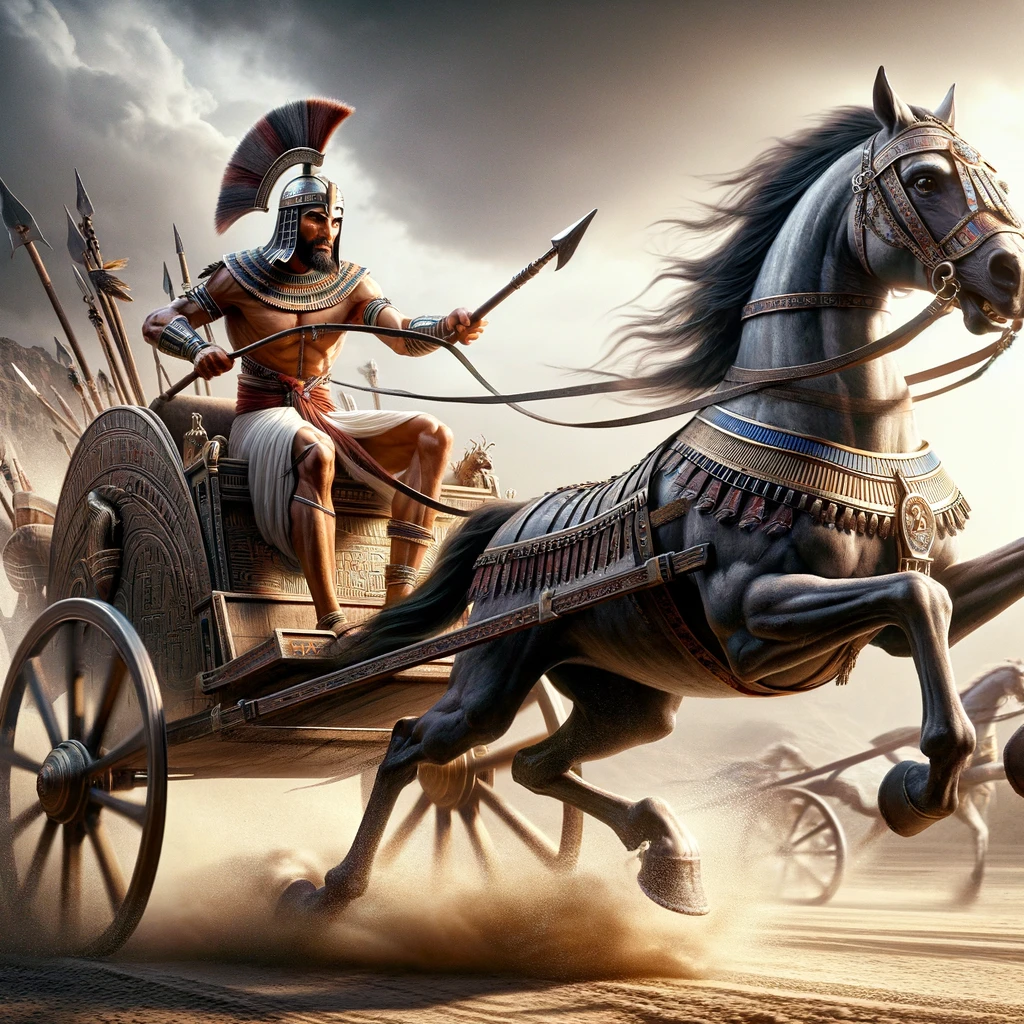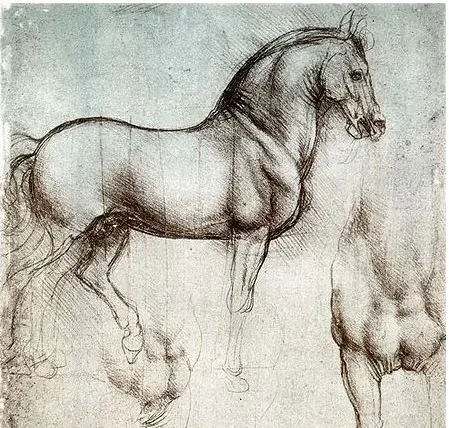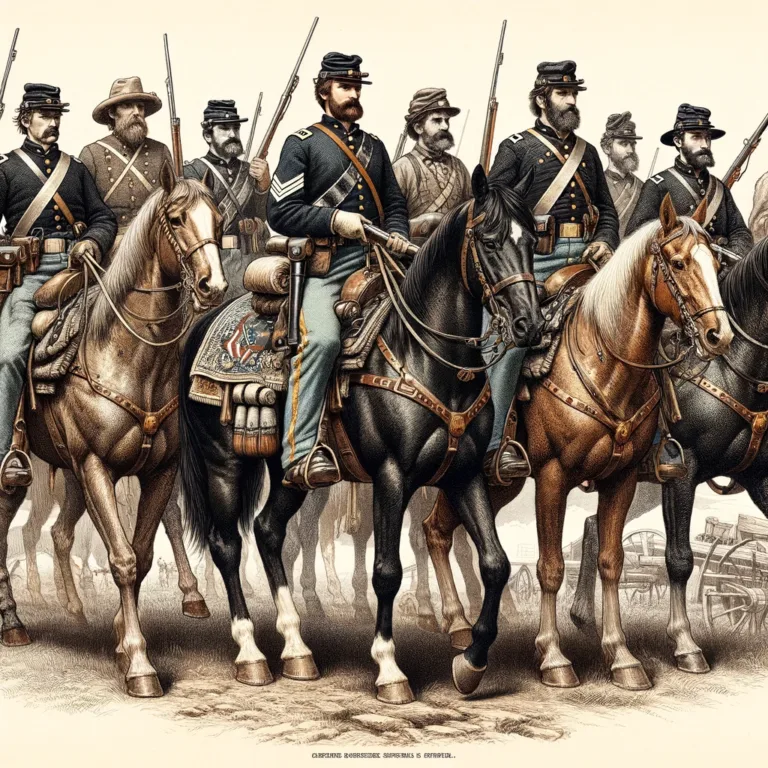The Unstoppable Force: Arabian Horses in Military Campaigns
Arabian horses, with their elegant stature and spirited demeanor, have captivated the hearts of equestrians and historians alike for centuries. Originating from the Arabian Peninsula, this ancient breed embodies a legacy steeped in legend, endurance, and unparalleled beauty.
The Arabian horse breed is renowned for its distinctive features, including a dished face, arched neck, and high tail carriage, which distinguish it from other equine breeds. With a history that traces back thousands of years, Arabian horses have been treasured by nomadic tribes, revered by kings, and celebrated in literature and art across cultures.
Beyond their aesthetic appeal, Arabian horses have earned a place of honor on the battlefield throughout history. From ancient warfare to modern conflicts, these noble steeds have proven themselves as invaluable companions to warriors, generals, and conquerors. Their exceptional qualities, including unmatched endurance, agility, intelligence, and unwavering loyalty, have made them indispensable assets in military campaigns around the world.
In this blog post, we will delve into the rich tapestry of Arabian horses’ historical role in military campaigns. We will explore their contributions to ancient civilizations, their pivotal role in Islamic conquests, their influence on European warfare, and their continued presence in modern conflicts. By examining the enduring legacy of Arabian horses on the battlefield, we will gain a deeper appreciation for the profound impact they have had on the course of history.
The Legacy of the Arabian Horse
The Arabian horse stands as a testament to centuries of selective breeding and cultural reverence, embodying a legacy that spans millennia. Its historical origins can be traced back to the deserts of the Arabian Peninsula, where the Bedouin tribes carefully cultivated and nurtured this remarkable breed.
Historical Origins of the Arabian Horse Breed
The origins of the Arabian horse breed are shrouded in myth and legend, but archaeological evidence suggests that its ancestors roamed the Arabian Peninsula as far back as 4,500 years ago. Bedouin nomads, known for their deep connection to the desert and its inhabitants, played a pivotal role in the development of the Arabian horse breed. Through meticulous breeding practices guided by intuition and necessity, they crafted a horse uniquely suited to survive and thrive in the harsh desert environment.
Overview of the Arabian Horse’s Characteristics
The Arabian horse is revered for its exceptional qualities, which have earned it a reputation as one of the finest equine breeds in the world. Among its most notable characteristics are its unmatched endurance, enabling it to traverse vast distances with ease, even in the harshest of conditions. This remarkable stamina is complemented by its remarkable speed, allowing it to outpace rivals in both short sprints and long-distance journeys.
Intelligence is another hallmark of the Arabian horse, as it demonstrates a keen ability to adapt to its surroundings and problem-solve in challenging situations. This intelligence, coupled with its innate curiosity and quick learning ability, makes the Arabian horse highly trainable and responsive to its rider’s commands.
Yet perhaps the most enduring quality of the Arabian horse is its unwavering loyalty. Forming deep bonds with their human counterparts, Arabian horses are renowned for their devotion and trustworthiness, making them valued companions both on and off the battlefield.

Importance of the Arabian Horse in Bedouin Culture and Desert Warfare Tactics
In Bedouin culture, the Arabian horse held a position of utmost significance, revered as a symbol of status, wealth, and prestige. Bedouin tribes relied on their horses for transportation, herding, and protection, forging a profound bond that transcended mere utility.
Furthermore, the Arabian horse played a crucial role in desert warfare tactics, where mobility and agility were paramount. Bedouin warriors mounted on Arabian horses could swiftly navigate the treacherous terrain of the desert, launching surprise attacks and evading pursuit with remarkable efficiency. This strategic advantage afforded by the Arabian horse proved decisive in countless skirmishes and battles throughout history, earning it a fearsome reputation on the battlefield.
In summary, the legacy of the Arabian horse is one of resilience, adaptability, and unwavering loyalty. From its humble origins in the deserts of Arabia to its revered status as a symbol of grace and power, the Arabian horse continues to captivate the imagination and inspire admiration across cultures and continents.
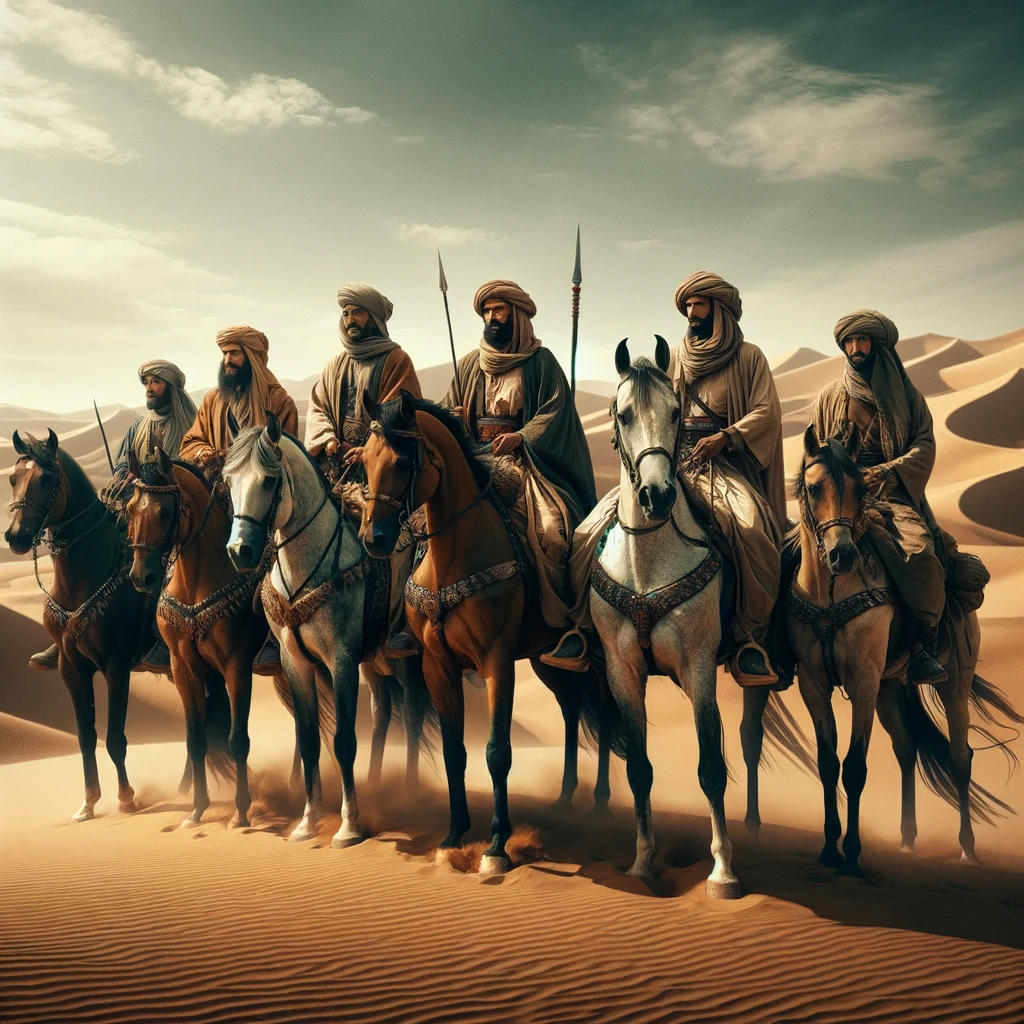
Arabian Horses in Ancient Warfare
The role of Arabian horses in ancient civilizations is a testament to their enduring legacy as indispensable assets on the battlefield. Across cultures such as the Egyptians, Persians, and Greeks, Arabian horses left an indelible mark on the annals of military history, shaping strategies and tactics that would influence warfare for centuries to come.

Exploration of the Arabian Horse’s Role in Ancient Civilizations
In ancient Egypt, Arabian horses were highly prized for their speed, agility, and endurance, qualities that made them invaluable in both military and civilian contexts. The pharaohs relied on Arabian horses to pull chariots into battle, providing swift and decisive mobility on the battlefield.
Similarly, the Persian Empire recognized the prowess of Arabian horses and incorporated them into their formidable cavalry units. With their superior speed and maneuverability, Arabian horses enabled Persian cavalry to execute lightning-fast attacks, outmaneuvering and overwhelming their adversaries with ease.
The Greeks, too, esteemed the Arabian horse for its exceptional qualities, employing them in various roles within their military forces. From cavalry charges to reconnaissance missions, Arabian horses played a crucial role in Greek military campaigns, contributing to their victories on the battlefield.
Famous Arabian Warhorses and Their Legendary Feats in Battle
Throughout history, numerous Arabian warhorses have achieved legendary status for their bravery and prowess in battle. One such example is Saladin’s horse, which carried the renowned Muslim general during his campaigns against the Crusaders in the 12th century. Known for its speed and agility, Saladin’s horse played a pivotal role in his military successes, earning the admiration of allies and adversaries alike.
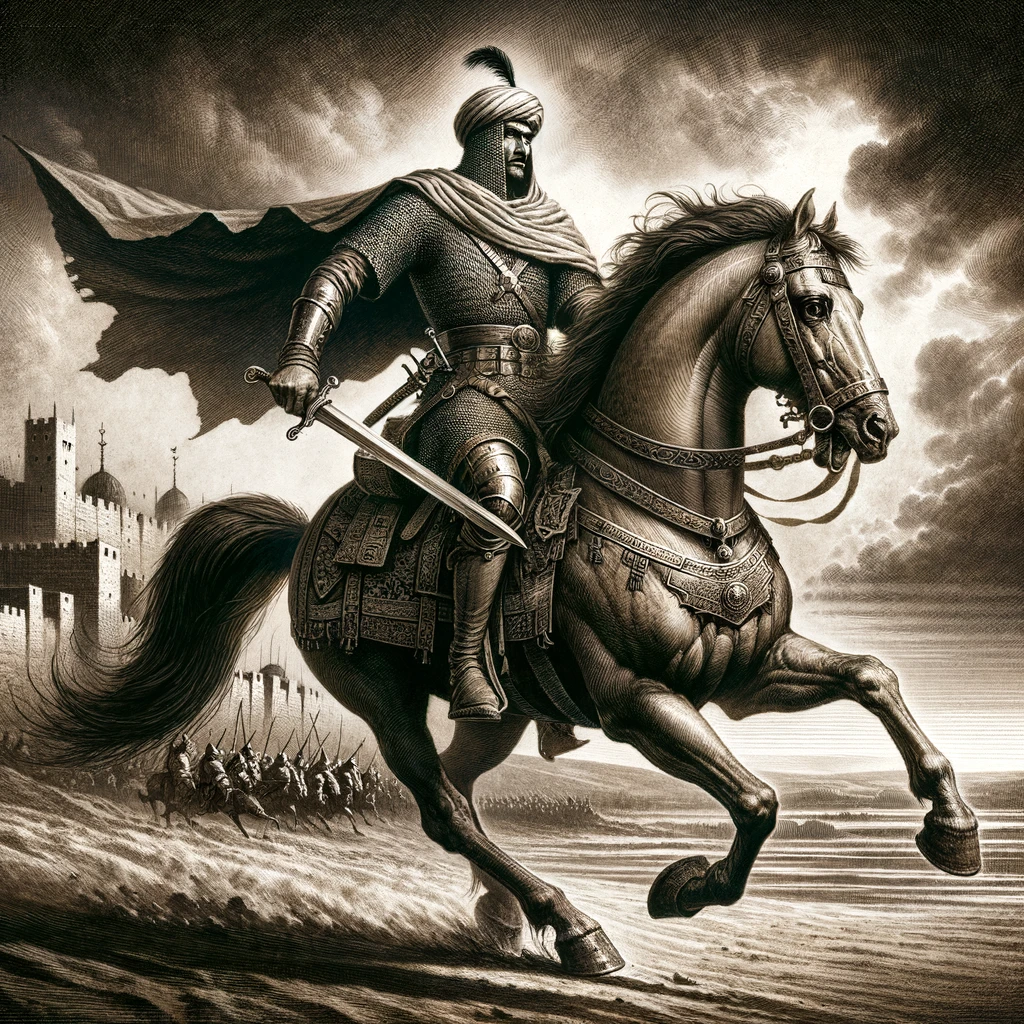
How Arabian Horses Influenced Military Strategies and Tactics in Ancient Warfare
Arabian horses revolutionized military strategies and tactics in ancient warfare, offering commanders unprecedented mobility and flexibility on the battlefield. Their speed and agility allowed for swift maneuvers and surprise attacks, catching enemy forces off guard and disrupting their formations.
Furthermore, the introduction of Arabian horses into ancient military forces spurred advancements in cavalry warfare, as commanders sought to harness their full potential on the battlefield. From innovative cavalry charges to hit-and-run tactics, Arabian horses enabled military leaders to develop new strategies that capitalized on their unique strengths.
The role of Arabian horses in ancient warfare was nothing short of transformative, shaping the course of military history through their unmatched speed, agility, and courage. From the battlefields of Egypt to the plains of Persia and beyond, Arabian horses left an indelible mark on ancient civilizations, forever changing the way wars were fought and won.

Arabian Horses in Islamic Conquests
The Islamic conquests of the 7th and 8th centuries saw the rapid expansion of the Islamic empire across vast swathes of territory, and Arabian horses played a pivotal role in this unprecedented military success. With their unmatched speed, endurance, and agility, Arabian horses provided the Islamic armies with a formidable advantage on the battlefield, enabling them to outmaneuver and overpower their adversaries with remarkable efficiency.
the Pivotal Role Arabian Horses Played in the Expansion of the Islamic Empire
Arabian horses were central to the military campaigns that propelled the Islamic empire to its zenith, serving as the backbone of the Islamic cavalry forces. With their origins rooted in the Arabian Peninsula, these horses were uniquely suited to the harsh desert terrain encountered during the conquests, allowing Islamic armies to traverse vast distances with ease and speed.
The mobility afforded by Arabian horses enabled Islamic forces to launch swift and decisive attacks against their enemies, securing key strategic objectives and expanding the borders of the empire with remarkable rapidity. Moreover, the cultural significance of Arabian horses within Islamic society further fueled their prominence in military affairs, with commanders and warriors alike regarding them as symbols of prestige and honor.
Analysis of Their Impact on Cavalry Warfare During the Islamic Conquests
Arabian horses revolutionized cavalry warfare during the Islamic conquests, offering commanders unprecedented speed, maneuverability, and striking power on the battlefield. Islamic cavalry units, composed largely of mounted warriors armed with spears, swords, and bows, relied heavily on Arabian horses to execute lightning-fast charges and flanking maneuvers that shattered enemy formations and instilled fear in their opponents.
The agility of Arabian horses allowed Islamic cavalry to navigate challenging terrain with ease, whether traversing deserts, scaling mountain passes, or crossing rivers, giving them a strategic advantage over their adversaries. Additionally, the endurance of Arabian horses ensured that Islamic cavalry could sustain prolonged engagements without faltering, maintaining pressure on enemy forces until victory was achieved.
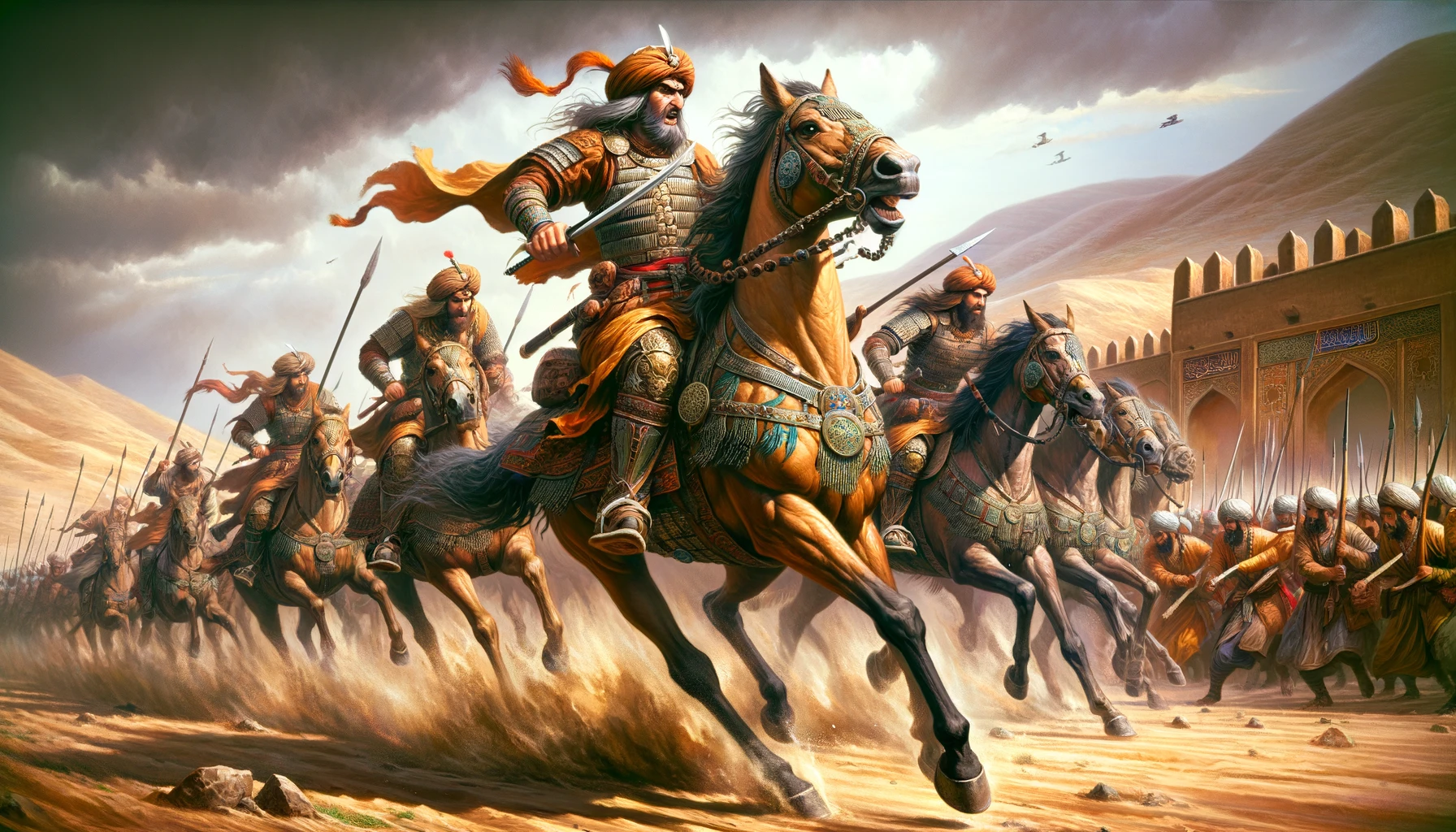
Specific Battles Where Arabian Horses Were Instrumental in Securing Victory
Numerous battles during the Islamic conquests bore witness to the decisive impact of Arabian horses on the outcome of engagements. One such example is the Battle of Yarmouk in 636 CE, where Islamic cavalry mounted on Arabian horses played a crucial role in routing the Byzantine forces and securing control over the Levant.
Similarly, the Battle of Qadisiyyah in 636 CE saw Islamic cavalry units, bolstered by Arabian horses, achieve a resounding victory over the Sassanian Empire, paving the way for the subsequent conquest of Persia. In both cases, the speed, agility, and endurance of Arabian horses were instrumental in outmaneuvering and overwhelming enemy forces, leading to decisive triumphs for the Islamic armies.
In conclusion, Arabian horses were indispensable assets to the Islamic conquests, serving as the vanguard of the Islamic cavalry forces and playing a decisive role in securing victory on the battlefield. Their unmatched qualities of speed, agility, and endurance enabled Islamic armies to overcome formidable foes and establish one of the most expansive empires in history.
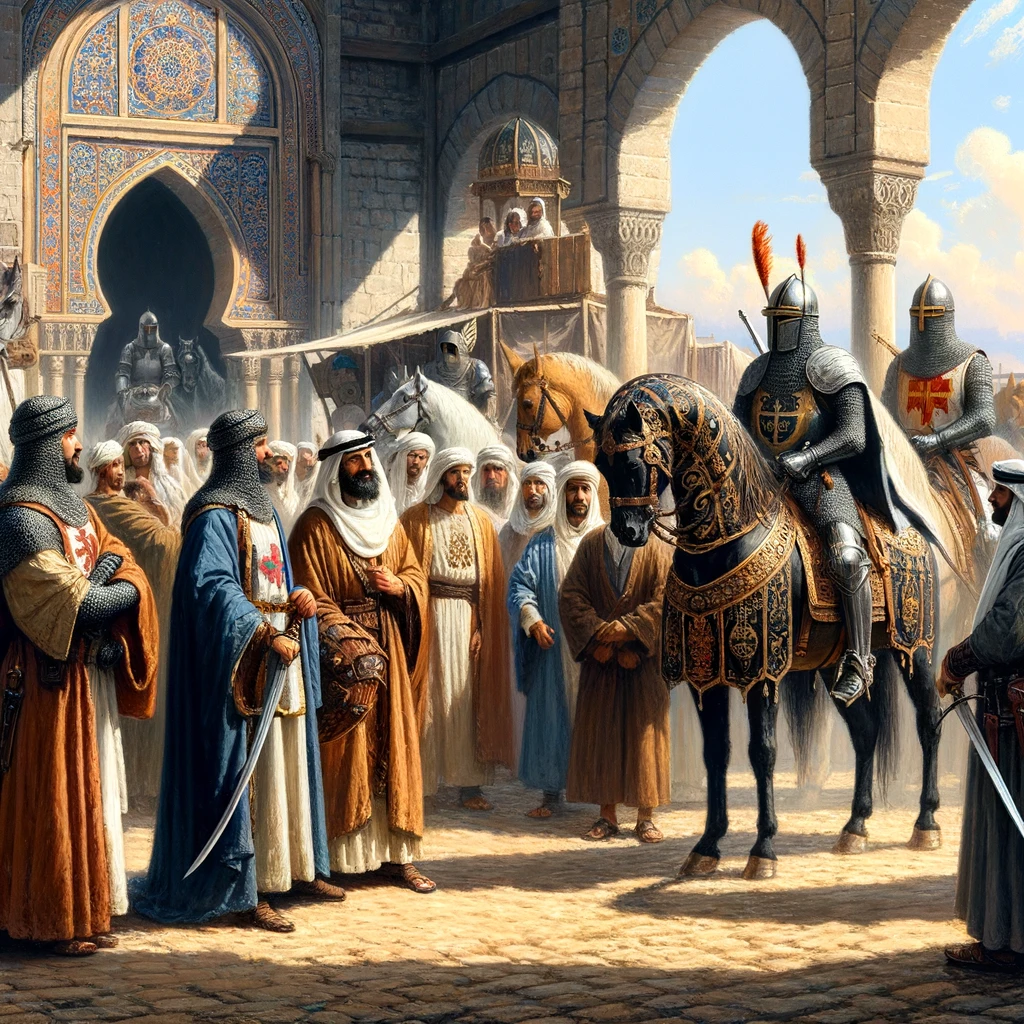
Arabian Horses in European Warfare
The introduction of Arabian horses to Europe during the Crusades marked a significant turning point in the continent’s military history, heralding a new era of cavalry warfare that would shape the course of medieval conflicts. With their unmatched speed, agility, and endurance, Arabian horses revolutionized European cavalry tactics and played a pivotal role in numerous military campaigns throughout the Middle Ages.
The Introduction to Europe During the Crusades and Subsequent Medieval Conflicts
The Crusades, launched in the 11th century, brought European knights into contact with the Arab world, where they encountered the formidable Arabian horse for the first time. Impressed by the speed, agility, and stamina of these steeds, European nobles sought to acquire them for their own military endeavors, leading to the importation of Arabian horses into Europe.
Subsequent medieval conflicts saw the widespread adoption of Arabian horses among European nobility, who prized them for their superior qualities on the battlefield. From the Iberian Peninsula to the battlefields of France and England, Arabian horses became sought-after mounts for knights and cavalrymen, transforming European warfare in the process.

The Contributions of Arabian Horses in the Rise of European Cavalry Warfare
Arabian horses played a central role in the rise of European cavalry warfare, offering knights and cavalry units unparalleled speed, agility, and striking power. Equipped with lances, swords, and shields, mounted knights mounted on Arabian horses became the epitome of medieval chivalry, charging into battle with ferocious intensity and inspiring fear in their adversaries.
The agility of Arabian horses allowed European cavalry to execute complex maneuvers on the battlefield, including flanking attacks, feigned retreats, and hit-and-run tactics, which proved devastatingly effective against enemy formations. Moreover, the endurance of Arabian horses ensured that European cavalry could sustain prolonged engagements, maintaining pressure on enemy forces until victory was achieved.
A very notable Arabian warhorse is Marengo, the beloved mount of Napoleon Bonaparte during his military campaigns in Europe. Marengo accompanied Napoleon on his conquests across the continent, including the Battle of Marengo in 1800, where his swift and decisive maneuvers helped secure victory for the French army.
In summary, Arabian horses played a transformative role in European warfare, shaping the development of cavalry tactics and contributing to the success of numerous military campaigns throughout the Middle Ages and beyond. Their unmatched qualities of speed, agility, and endurance made them indispensable assets on the battlefield, earning them a place of honor in the annals of military history.
Arabian Horses in Modern Warfare
While the advent of mechanized warfare in the 20th century heralded the decline of traditional cavalry units, Arabian horses continued to play a significant role in modern conflicts, particularly in desert warfare and reconnaissance missions. Additionally, their enduring legacy persists in ceremonial roles within modern military organizations, where they symbolize tradition, prestige, and honor.

the Use of Arabian Horses in More Recent Military Conflicts
Arabian horses saw limited use in modern warfare, primarily in conflicts where mechanized vehicles faced challenges traversing rugged terrain or extreme climates, such as the deserts of the Middle East. During World War I, Arabian horses were employed by various factions in the Middle East, including the Ottoman Empire and the Arab Revolt led by Lawrence of Arabia.
Similarly, during World War II, Arabian horses were utilized in North Africa, where they provided invaluable support to both Allied and Axis forces operating in the harsh desert environments. Their ability to navigate sandy terrain and endure long marches made them well-suited for reconnaissance missions and supply transport in areas inaccessible to motorized vehicles.
Their Role in Desert Warfare and Reconnaissance Missions
Arabian horses played a crucial role in desert warfare and reconnaissance missions, where their agility, endurance, and adaptability proved invaluable. Equipped with skilled riders, Arabian horses were able to traverse vast expanses of desert terrain with relative ease, providing reconnaissance units with vital intelligence on enemy movements and positions.
Moreover, Arabian horses offered a stealthy and silent mode of transportation, allowing reconnaissance units to operate undetected behind enemy lines and gather valuable information without alerting enemy forces. Their ability to cover long distances quickly made them ideal for hit-and-run raids and guerrilla tactics, disrupting enemy supply lines and communications.
Arabian Horses Continue to Serve in Ceremonial Roles in Modern Military Organizations
Despite the diminished role of horses in contemporary warfare, Arabian horses continue to hold a cherished place in modern military organizations, particularly in ceremonial roles. Their regal appearance, grace, and symbolism of tradition make them ideal for ceremonial occasions, including parades, state functions, and official ceremonies.
Arabian horses are often used by military units around the world to honor fallen soldiers, commemorate historical events, and pay tribute to national heroes. Their presence evokes a sense of pride and reverence, reminding observers of the enduring bond between humanity and the noble steed that has shaped the course of history for millennia.
In conclusion, while Arabian horses may no longer play a prominent role in modern warfare, their legacy lives on in the annals of military history and continues to be celebrated in ceremonial roles within modern military organizations. As symbols of tradition, honor, and prestige, Arabian horses serve as a reminder of the enduring partnership between humans and horses that has stood the test of time.
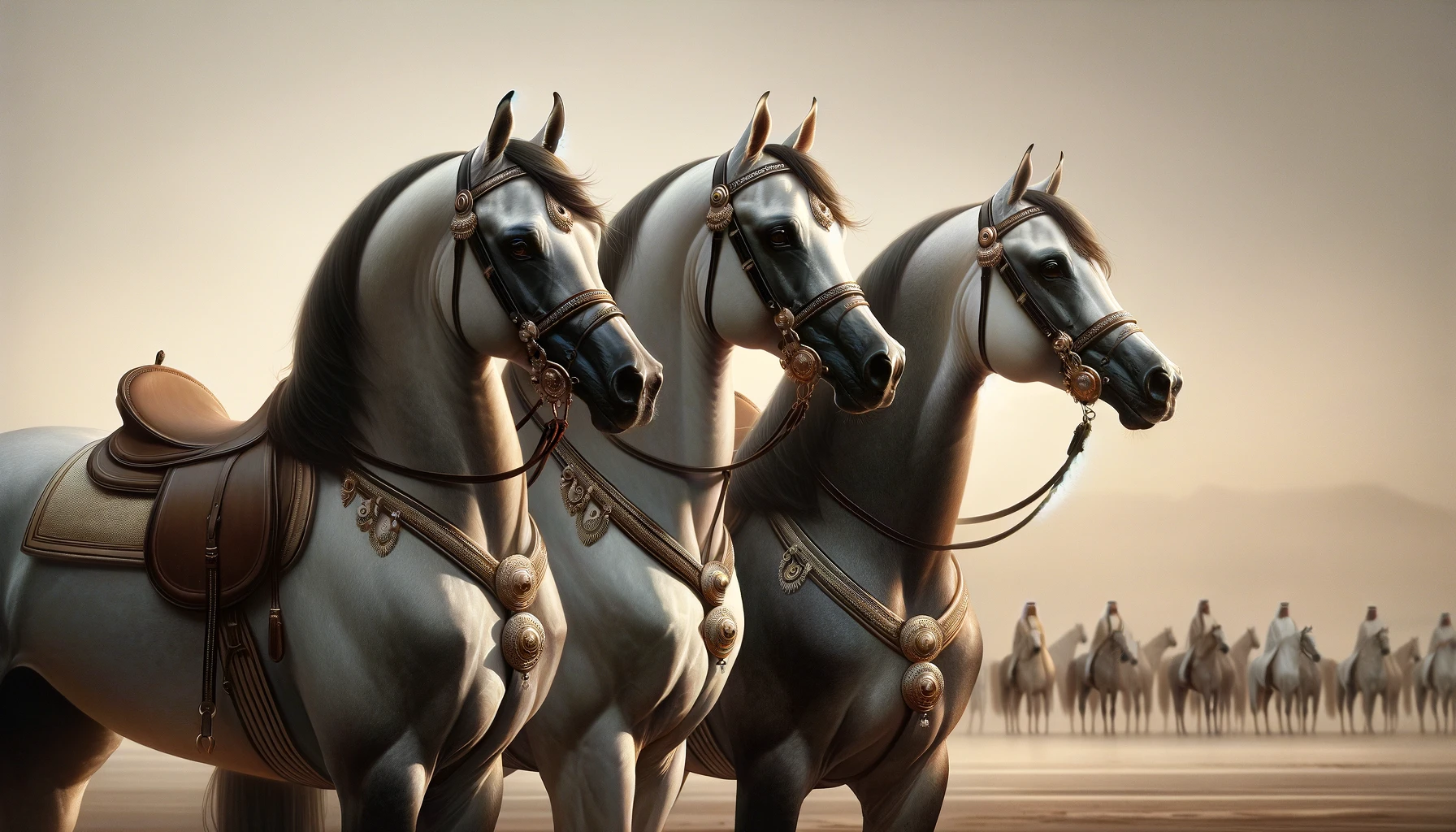
Conclusion
Throughout history, Arabian horses have left an indelible mark on military campaigns, serving as steadfast companions and formidable assets on the battlefield. Their enduring legacy spans millennia, from ancient civilizations to modern conflicts, and their unique qualities have made them indispensable allies to warriors and commanders across cultures and continents.
From the deserts of Arabia to the battlefields of Europe and beyond, Arabian horses have played a pivotal role in shaping the course of military history. Their unmatched speed, agility, endurance, and intelligence have made them prized possessions sought after by kings, generals, and conquerors throughout the ages.
Arabian horses have participated in some of the most significant military campaigns in history, from ancient conquests to modern conflicts, leaving a lasting impression on the outcomes of battles and the destinies of nations. Whether carrying warriors into combat or serving as reconnaissance mounts, Arabian horses have consistently proven their worth as invaluable assets on the battlefield.
The enduring appeal of Arabian horses lies in their unique combination of traits that make them ideally suited for military endeavors. Their unparalleled endurance allows them to traverse vast distances without faltering, while their agility enables them to navigate treacherous terrain with ease. Their intelligence and loyalty forge a deep bond with their riders, inspiring confidence and trust in the heat of battle.
Arabian horses possess a spirit and resilience that sets them apart from other equine breeds, earning them a reputation as the ultimate warhorse throughout history. Whether charging into the fray or standing steadfast in the face of danger, Arabian horses have demonstrated time and again their valor and determination on the battlefield.
In both military and civilian contexts, the Arabian horse continues to evoke admiration and reverence for its noble qualities and storied history. Beyond its military prowess, the Arabian horse is celebrated for its beauty, grace, and versatility, making it a cherished companion and competitor in equestrian sports and recreational riding.
As symbols of tradition, honor, and prestige, Arabian horses hold a special place in the hearts of enthusiasts around the world, who recognize and appreciate their enduring legacy and timeless appeal. Whether charging into battle or trotting in a parade, the Arabian horse remains a powerful symbol of strength, resilience, and grace, embodying the spirit of partnership between humans and horses that transcends time and space.
References
- Archer, Rosemary. “The Arabian Horse: A Cultural History.” Reaktion Books, 2018.
- Edwards, Gladys Brown. “The Arabian: War Horse to Show Horse.” Arabian Horse Association of America, 1973.
- Hitti, Philip K. “The Arabs: A Short History.” Princeton University Press, 2002.
- Lawton, Patricia. “The Horse in West African History: The Role of the Horse in the Societies of Pre-Colonial West Africa.” Oxford University Press, 1987.
- Nicolle, David. “Armies of the Caliphates 862–1098.” Osprey Publishing, 1998.
- Storey, Anna. “War Horse: A History of the Military Horse and Rider.” Bloomsbury Publishing, 2012.
- Upton, Peter. “The Arabian: Legends and Reality.” Allen Books, 2002.
- Warren, James. “The Arabian Horse: History, Mystery, and Magic.” Antique Collectors’ Club, 2008.
- Yasser, Saad Al-Jadir. “The Arab Contribution to World War II.” Saqi Books, 1993.
- Young, Robert. “The Crusades: A Short History.” Wiley-Blackwell, 2005.
These sources provide a comprehensive overview of the role of Arabian horses in military history, offering insights into their origins, contributions, and enduring legacy on the battlefield. Readers interested in delving deeper into the subject are encouraged to explore these books for a more in-depth understanding of the Arabian horse’s rich and storied past.

